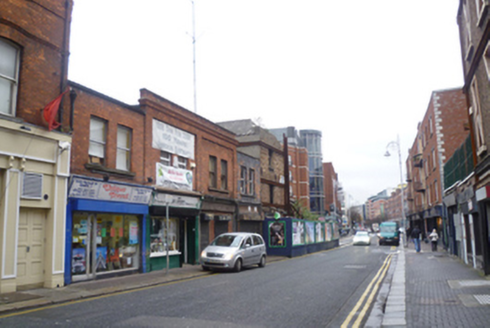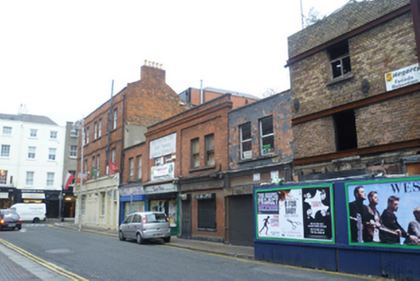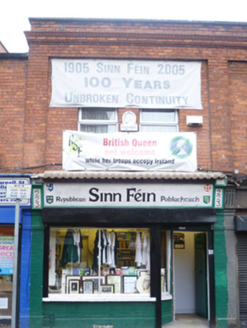Survey Data
Reg No
50010611
Rating
Regional
Categories of Special Interest
Architectural, Artistic
Original Use
House
In Use As
Shop/retail outlet
Date
1700 - 1750
Coordinates
315334, 234659
Date Recorded
04/11/2011
Date Updated
--/--/--
Description
Attached terrace of four two-bay two-storey houses, built c.1725, refaced and altered c.1880. Now in use as retail units with offices over, having recent timber and brick shopfronts. Replacement flat roofs behind red brick parapet with squared granite coping and raised central section with moulded architrave. Concealed gutters having cast-iron hopper and downpipe breaking through parapet. Red brick walls laid in English garden wall bond to front (south) elevation having recessed panels to first floor of central pair. Stone plaque inscribed 'Dáithí Ó Conaill 1938-1991', with profile in relief, to No. 223. Paired square-headed window openings with gauged brick voussoirs, shared granite sills and brick reveals. One-over-one pane replacement timber sliding sash windows to No. 222, replacement uPVC windows elsewhere. Applied timber shopfronts over red brick to ground floors comprising timber panelled cornices and fascias flanked with terminal console brackets over brick pilasters. Recent timber panelling to Nos. 221 and 224. Square-headed window openings having timber display windows over brick risers to No. 223. Square-headed door opening to No. 223 having timber panelled door. Replacement aluminium window and door openings to No. 224, steel shutters to Nos. 221 and 222. Ruinous remains of former house to east of terrace, possibly part of original terrace but now in very poor state of repair.
Appraisal
This pleasantly proportioned terrace is shown on Rocque's 1757 map and was refaced during the late nineteenth century. According to Dublin Civic Trust's 'Survey of Gable-Fronted Houses and Other Early Buildings of Dublin City' (2012), 'The shared central chimneystack remains the only indication of early build date, forming part of a collection of interesting diminutively scaled buildings with probable early eighteenth-century origins.' The re-facing has created a pleasant unified façade highlighted by decorative brick details and a particularly pleasantly appointed shopfront to No. 223. The form and style of this composition stands as a fine example of Victorian-era streetscape design, as well as providing a pleasant point of focus.





